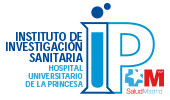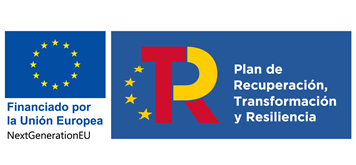Fisiopatología de la epilepsia y ganglios basales
Epilepsy, movement disorders and some psychiatric pathologies are among the main targets for functional neurosurgery. They share several properties that make them interesting for our research line.
Drug-resistant epilepsy affects 20-30% of patients suffering epilepsy worldwide. One of the most efficacious treatments is surgery, including resective techniques and neuromodulation in different forms. Presurgical evaluation usually requires the use of very deep studies (e.g, morphological and functional MRi) or invasive techniques (intracranial electrodes), which are also used during treatment (electrocorticographic recordings or extracellular recordings for Deep Brain Stimulation -DBS). In the same way, several pathologies affecting basal ganglia need different ancillary tests to characterize the illness (genetic, nuclear medicine, morphological MRI) and to carry out the treatment (DBS).
Altogether, this set of human illness offers a unique opportunity to study the underlying pathophysiological processes. Understanding these processes is the first step to its rational treatment
Our research line is integrated by clinical researchers which are part of national reference units for the treatment of refractory epilepsy and surgical treatment of movement disorders. Therefore, our scientific interests include all aspects around functional neurosurgery and, especially, epilepsy and basal ganglia pathologies.
The topics we are working on include the following:
- Identification of basal ganglia subnuclei by extracellular recording.
- Physiopathology of somatosensory thalamus, by means of somatosensory evoked potentials, electrically elicited.
- Connectivity in epilepsy. To do that, we are studying diffusion tensor imaging and fractional anisotropy, as well as electrophisiological recordings acquired by means of scalp or intracranial recordings.
- Genetics and epi-genetics in epilepsy.
- Quantified EEG (qEEG) to use as biomarker for different pathologies. Among those fields specially targeted by this technique are patients in Intensive Care Units and neurological and psychiatric illness.
- Cortico-cortical connectivity, especially for language function.
Miembros del equipo
|
Jefe de grupo: Jesús Pastor Gómez Hospital Universitario La Princesa |
Resto del equipo. Hospital Universitario La Princesa:
|
Pastor Gómez, Jesús. Tratamiento radioquirúrgico de alta precisión en epilepsia temporal mesial. PI12/02839. ISCIII. 2013-2015.
Pastor Gómez, Jesús. Monitorización neurofisiológica funcional intraoperatoria del lenguaje en pacientes con sedación. PI17/02193. ISCIII. 2018-2020.
Caracterizar y analizar la especificidad de las conexiones córtico-corticales mediantes potenciales evocados córtico-corticales de las áreas asociadas al lenguaje.
Esta ayuda está financiada por el Plan Estatal de Investigación Científica y Técnica y de Innovación 2013-2016 y el ISCIII – Subdirección General de Evaluación y Fomento de la Investigación – y cofinanciadas por el Fondo Europeo de Desarrollo Regional, Programa Operativo Crecimiento Inteligente 2014-2020 de acuerdo al Reglamento (UE) Nº 1303/2013.

Torres Díaz, Cristina Virginia. Caracterización molecular, epigenética y estudio de tetraploidias en pacientes epilépticos fármaco resistentes del lóbulo temporal. PI17/02244. ISCIII. 2018-2020.
Caracterización de las variantes en genes, modificaciones epigenéticas y la presencia de tetraploidía en un grupo de pacientes seleccionados por la Unidad de Referencia Nacional para el Tratamiento de la Epilepsia Refractaria del Hospital Universitario La Princesa (CSUR-HUP), diagnosticados como pacientes con Epilepsia del Lóbulo Temporal.
Esta ayuda está financiada por el Plan Estatal de Investigación Científica y Técnica y de Innovación 2013-2016 y el ISCIII – Subdirección General de Evaluación y Fomento de la Investigación – y cofinanciadas por el Fondo Europeo de Desarrollo Regional, Programa Operativo Crecimiento Inteligente 2014-2020 de acuerdo al Reglamento (UE) Nº 1303/2013.











